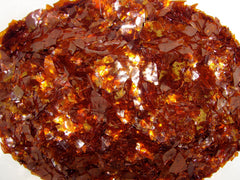Introducing... Shellac
Jan 11 2017 0 Comments
First of all I would like to wish Happy New Year to everyone and I hope all of you had a great Christmas break with close family and friends. Thanks for all your support last year and I am looking forward to see you again during 2017.

To start 2017 I wanted to bring up an article I have had in my archive for a while waiting to be part of our Blog. This is in part an excerpt from the Popular Woodworking Magazine and some other information taken from other reliable sources. The subject this week is “Shellac”. This will be just the beginning of future Blogs about this amazing product for finishing wood.
Firstly, Shellac is not Lacquer. Both Shellac and Lacquer are high-performance, clear wood finishes originating in Asia, and both have names that derive from the same Sanskrit word (laksha), but Lacquer is made from tree resin. Shellac, on the other hand, starts with a small scaly insect in India that is attracted to the twigs of several species of tree. The bugs suck the sap from the tree for nourishment and as part of their reproductive process excrete a resin to protect themselves and their eggs. This resin is called Stick Lac and is the raw material used to make Shellac.
Huge insect populations build up thick layers of resin covering the branches and twigs of the trees. This resin is harvested and cleaned of debris. The resin is then washed to further clean it and remove much of the natural dye. For many years, this dye was used commercially.
Traditionally, the Lac is processed by manual labor to make the Shellac. The Lac is placed in long cotton fabric tubes and heated over a covered fire. The fabric removes any residue, and clean Lac passes through it. While still warm, the clean Lac is then pulled and stretched into large sheets, which are broken into flaked Shellac after cooling. Globs of the hot Lac are scraped from the cotton tube and dropped onto a hard flat surface to form buttons for Button Lac. Modern methods include heating the Lac until it is molten and hydraulically forcing it through filters. It is then pressed into thin sheets and broken into flakes after it has cooled. This process gives to the waxed grades of Shellac.
Click to watch the video
Click to watch the video
Another method involves dissolving the Lac in alcohol and filtering the solution. The solution is run through driers, where the alcohol is evaporated and recovered, and the Shellac is pressed into sheets. This method produces the de-waxed varieties of Shellac.
Seed Lac, Button Lac and Shellac (named for its shell-like appearance) are forms, rather than quality grades. That’s important to remember.
Other terms you’ll encounter when shopping for this type of wood finish are: lemon, blonde, and various gem-related words, such as ruby. These terms all refer to whether or not the wax has been removed from the Lac. For some applications, you’ll want the wax. At other times you will want to use de-waxed versions.
This 11-minute video excerpt below, featuring the one and only Don Williams, is a fairly complete answer to a common question – what is Shellac?
Click to watch the video
More to come about this in the future.
Cheers, Gaston
0 comments




Leave a Comment